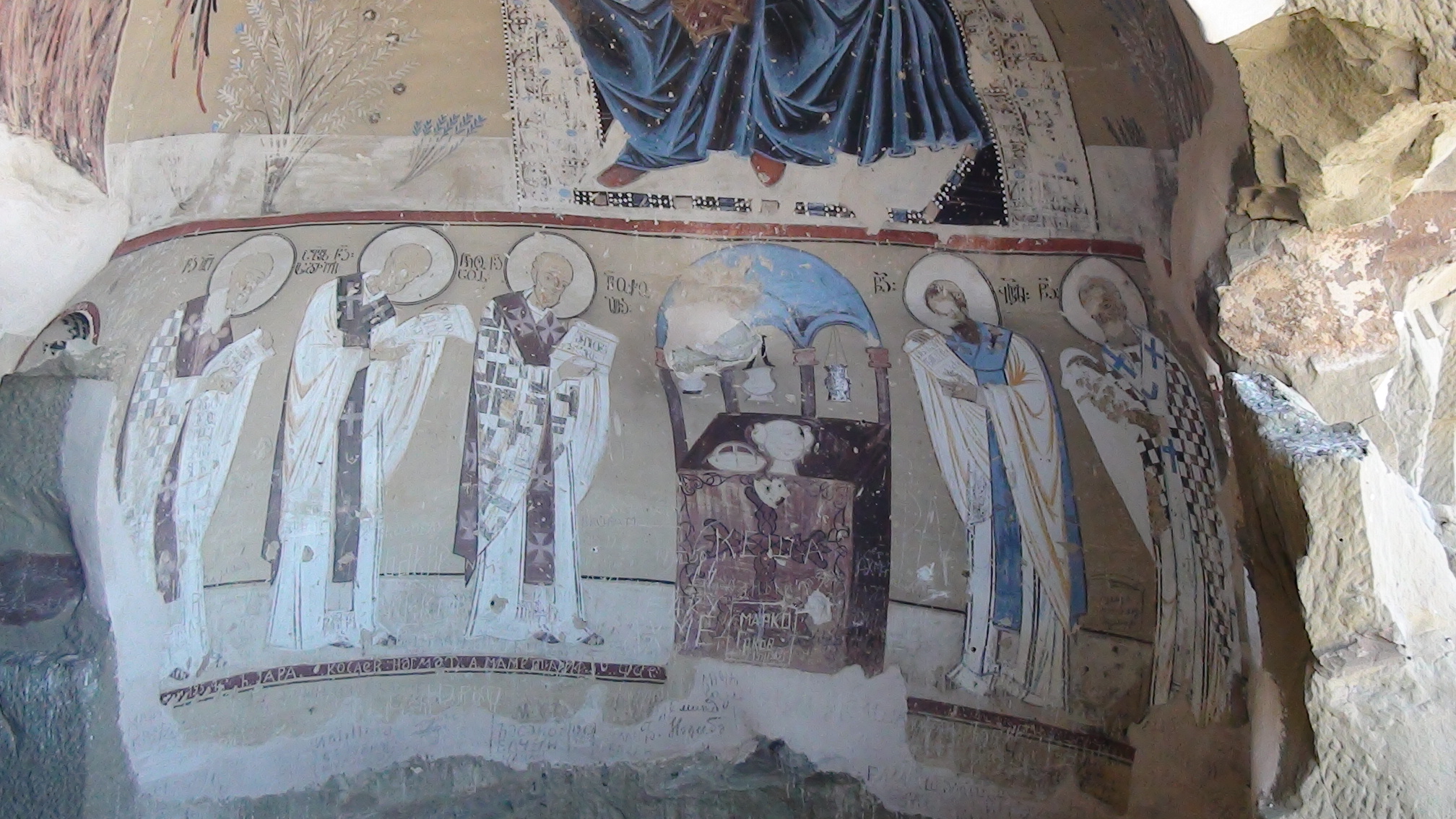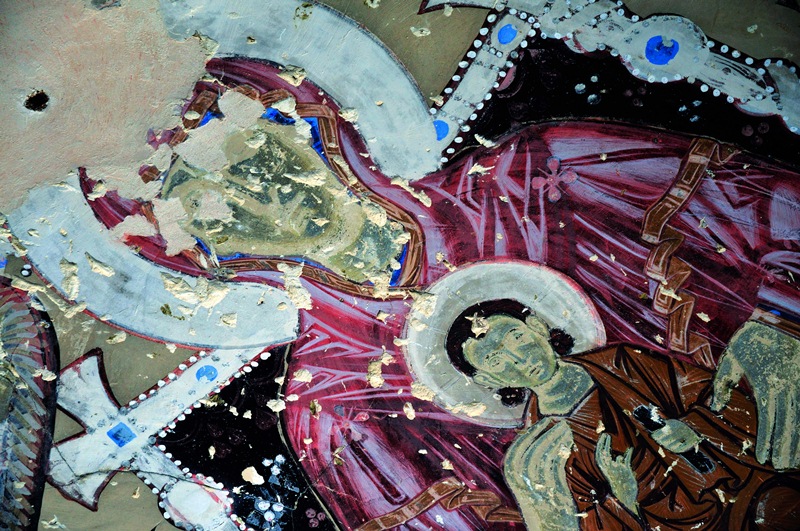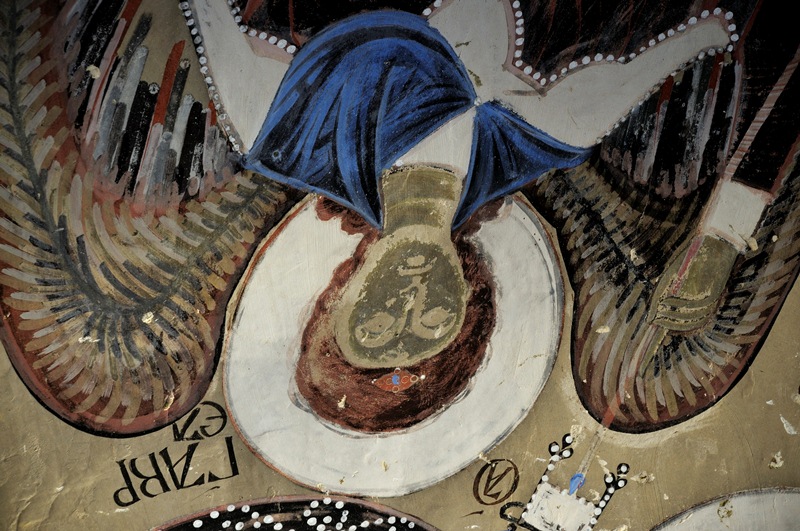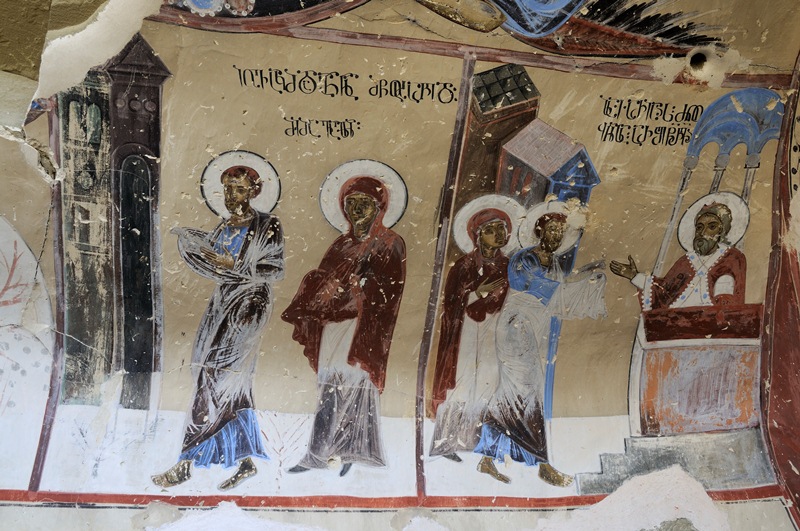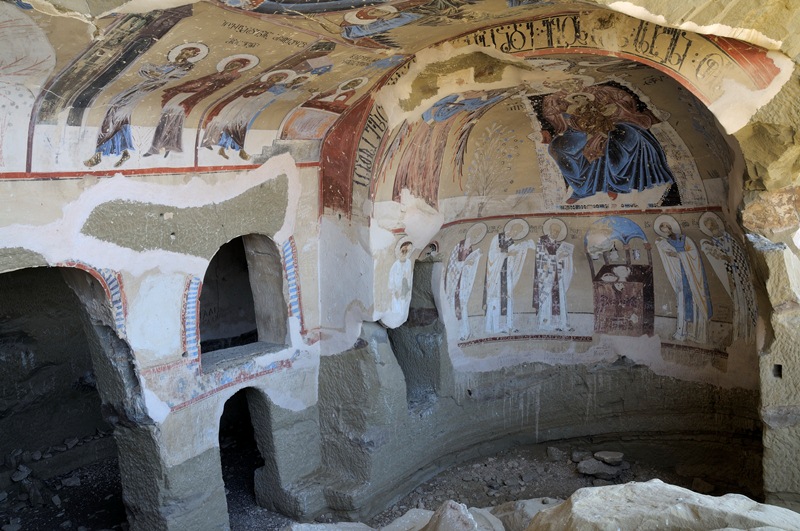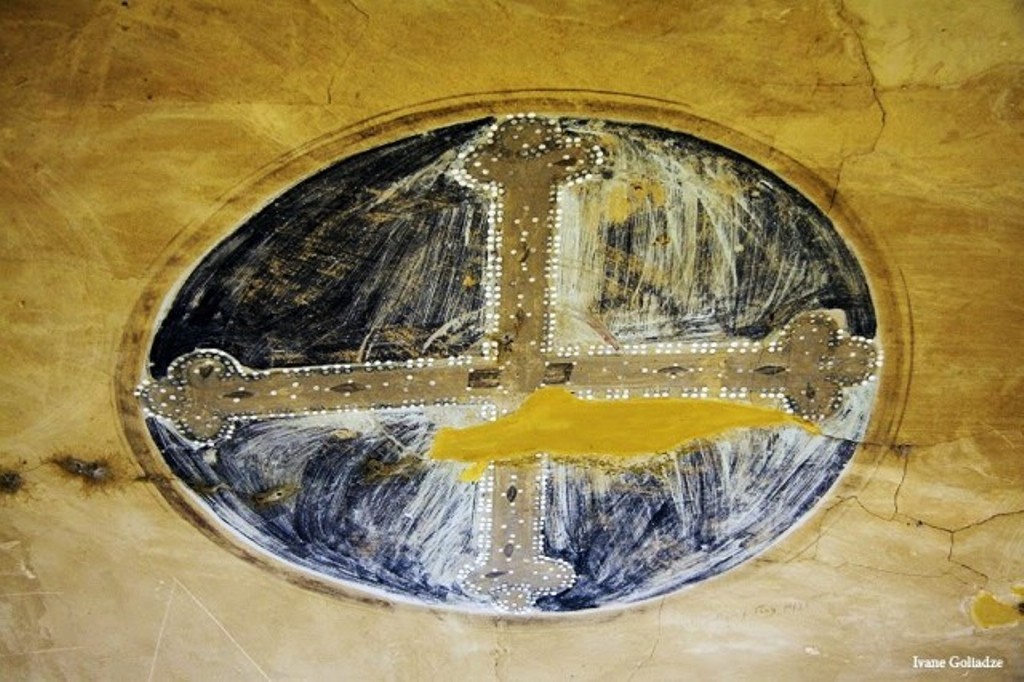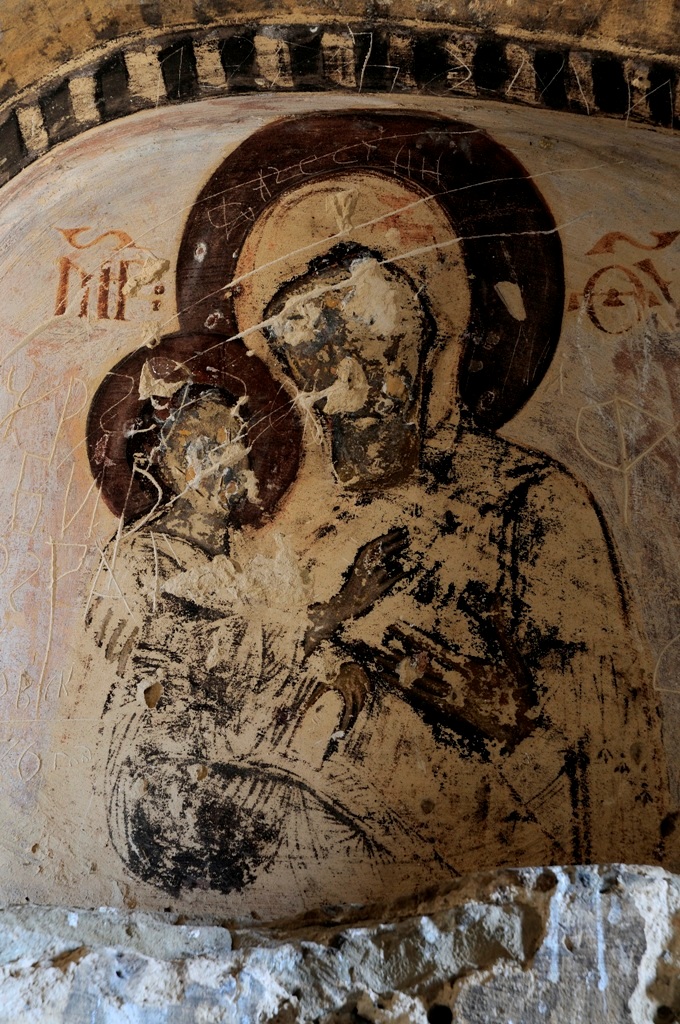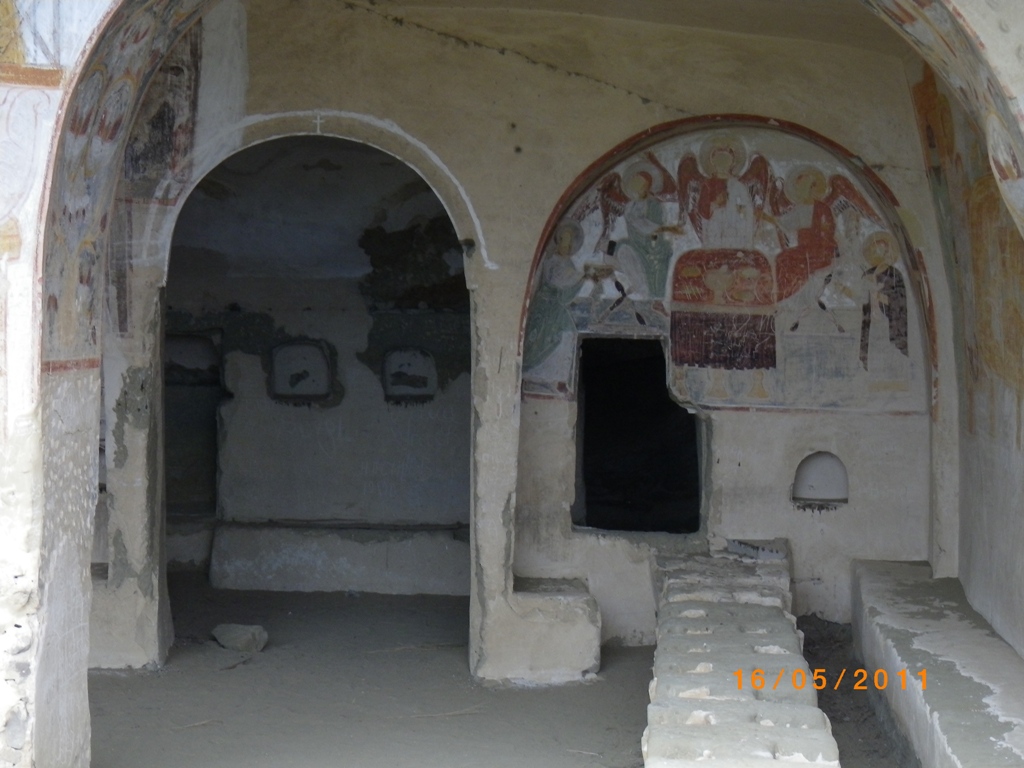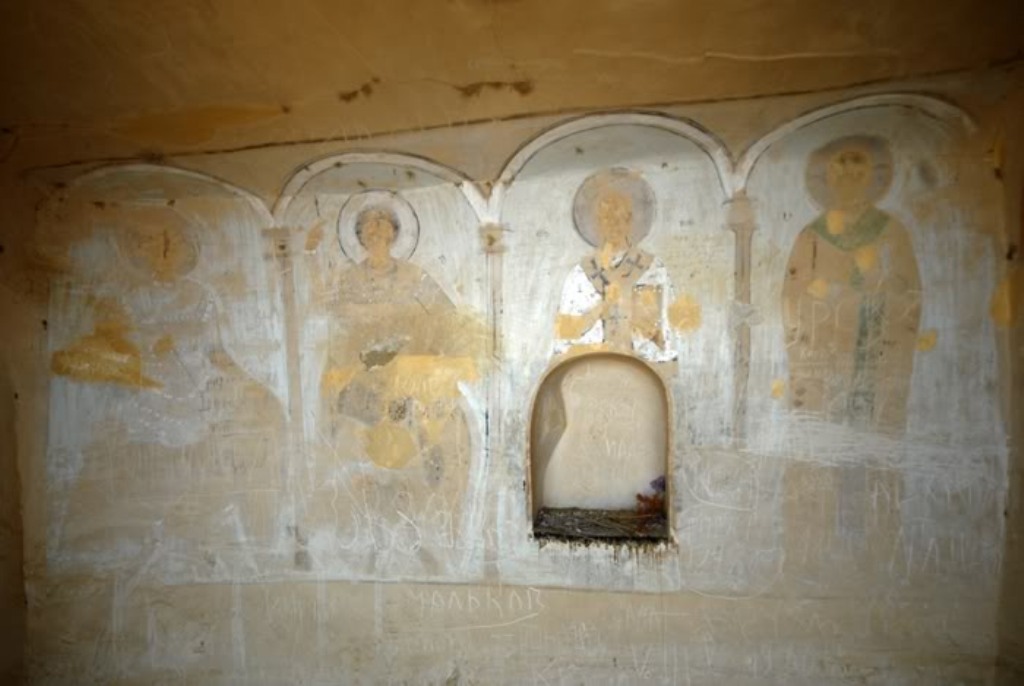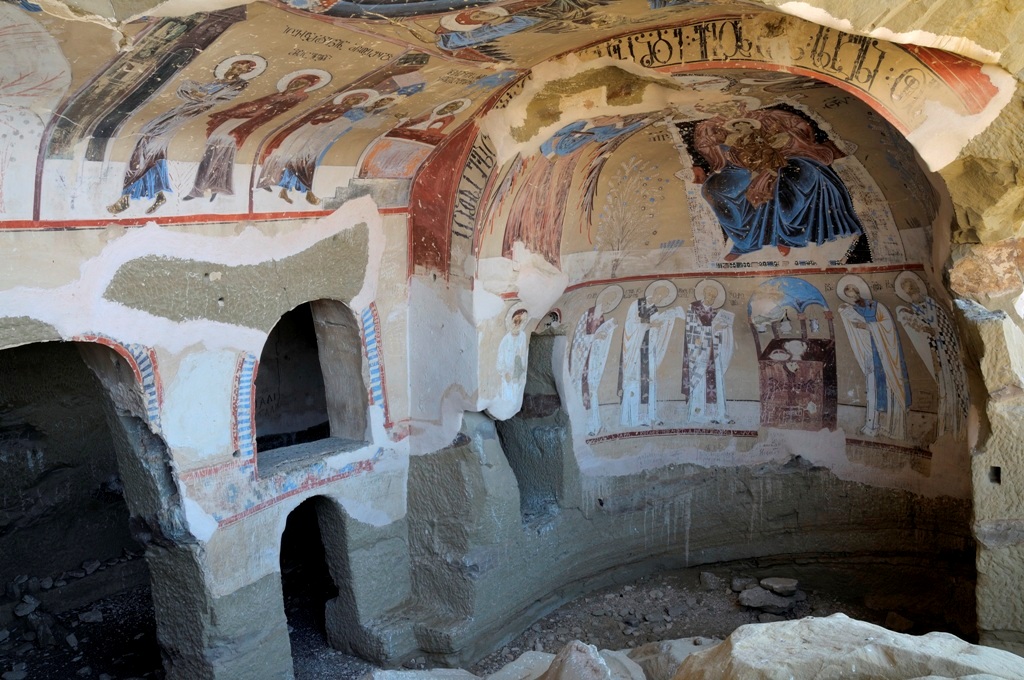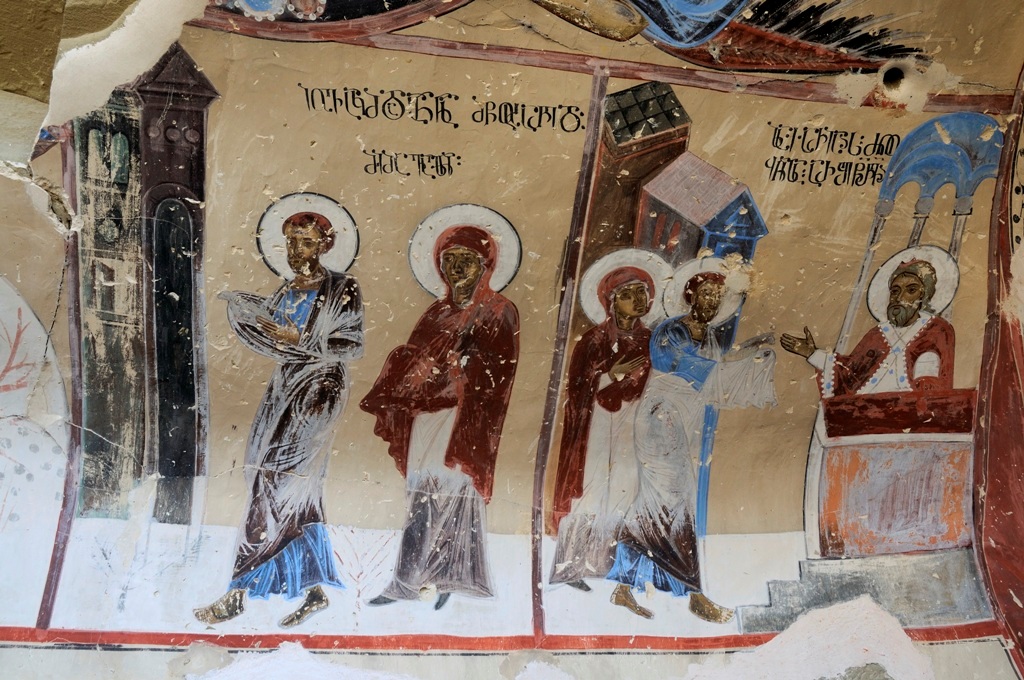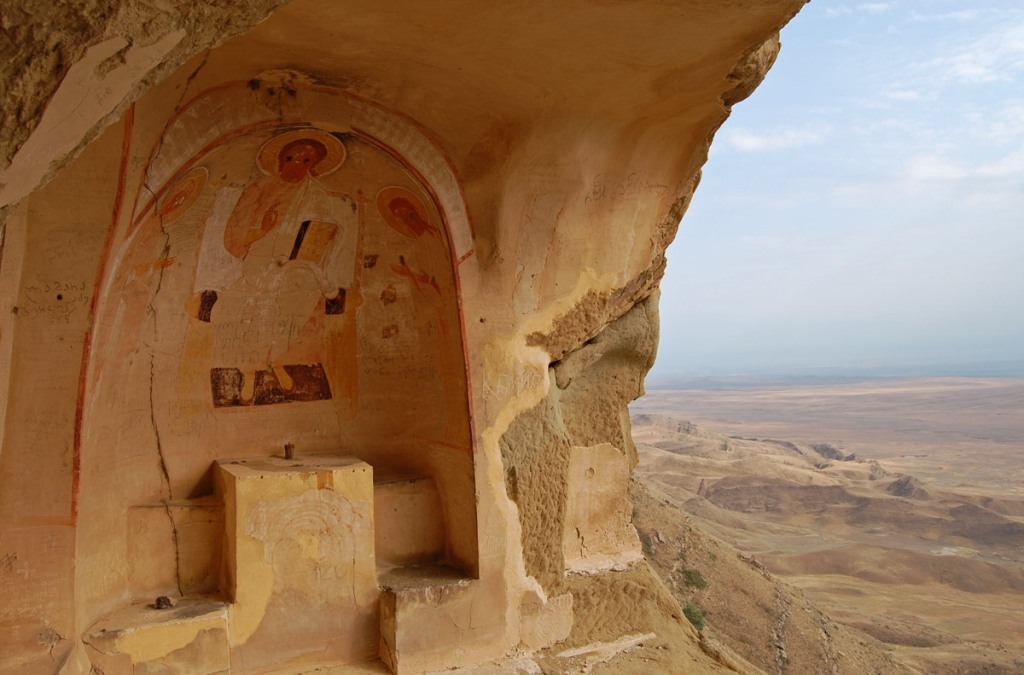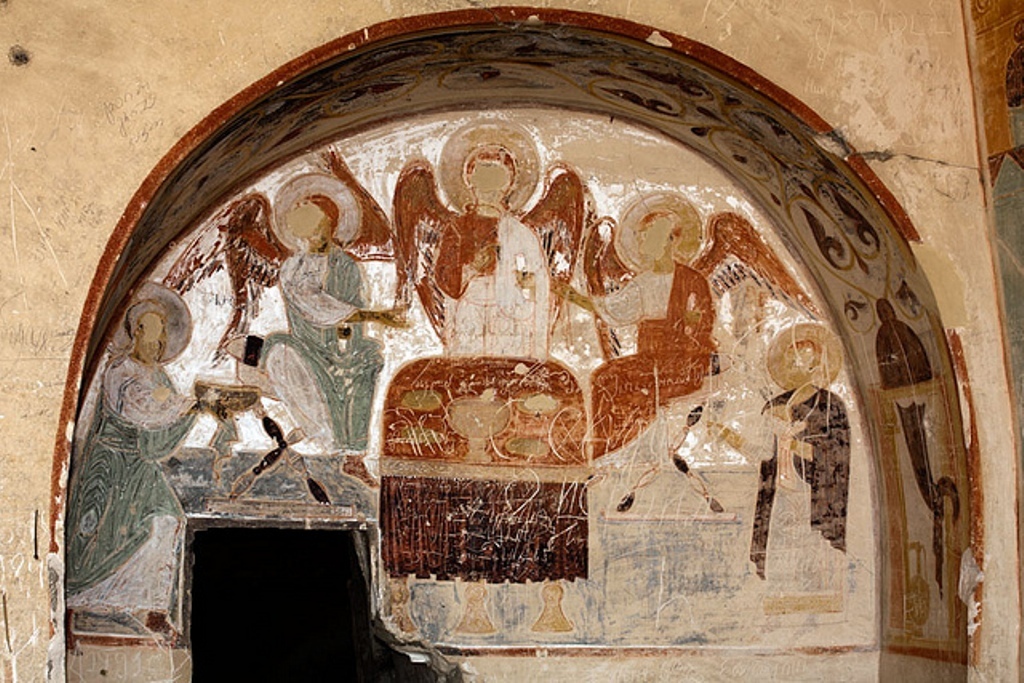In late 18-19th centuries, an interest to the cave-temples has somehow decreased, the place has turned into the ruins. This was due to the fact that in 1836 the Russian Tsardom has intentionally abolished Albanian Catholicate existing in Caucasian Albania and gave it to the subordination of the Armenian Gregorian Church. In the majority of caves fresco has been painted on the subject of Christianity. The interesting point is that these frescos has not been painted systematically, they have been decorated in a scattered form. The majority of frescos are painted on the walls of cave-temples where religious ceremonies were conducted and that are very similar according to their architectural style, form and structure to Albanian temples located in the the territory of Azerbaijan. There are also such kind of temples in the neighboring Gadabay and Shamkir, in the area of Sheki-Gakh. The interior of the several cave-temple complexes in the area of “Keshikchidagh” state historical and cultural reserve is very rich of frescos. According to historians, the frescos in this cave-temple, that used to be the place of worship of priests, was later created on the subjects taken from the “Bible” for the propagating of Christianity.
However, frescos in the cave-temple complexes – their compositions on the religious themes are not in the harmony with the space environment. Thus, these frescos undoubtedly are decorated in these objects very later after its construction. The researches have revealed that, frescos painted with watercolor belong to the 19th century. First of all, it should be noted that the placement of the compositions (komponovka) strictly does not comply with the interior and these compositions has not been arranged in a completed plot line. The frescos with various religious scene and characters have been drawn to the interior in a scattered form without any calculation. This fact confirms once more that, these caves had existed before the frescos have been drawn.
